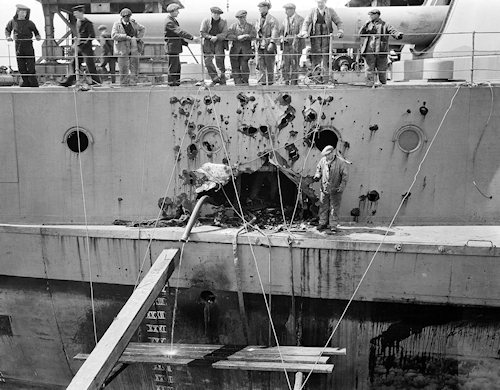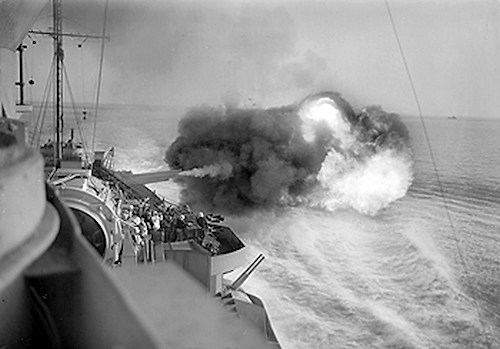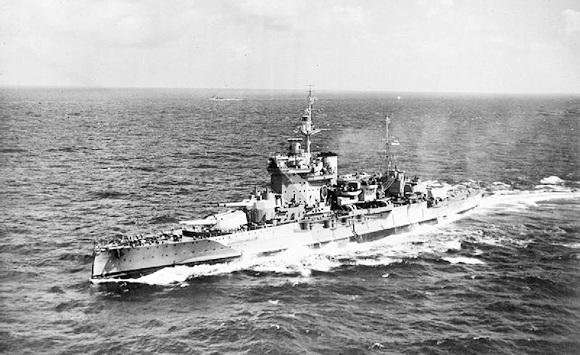La HMS Warspite – hereinafter referred to The Old Lady - was one of the most important battleships of the Royal Navy. She was one of the five superdreadnought (built in the 10s) of the class Queen Elizabeth; these ships mounted 381 mm guns, and were fueled by oil. It is worth pointing out that in that period a strong naval rearmament was taking place between the United Kingdom and the German Empire. Indeed, the Imperial German Navy responded – to class Queen Elizabeth – with the class Bavaria and battlecruisers Derfflinger.
the class Queen Elizabeth it was a program started with Winston Churchill first Lord of the Admiralty.
La Warspite She was laid down and designed at Devonport Dockyards in October 1912. She was launched on 26 November 1913 and entered active service with the Royal Navy in March 1915.
In the First World War, the ship took part in the Battle of Jutland (31 May-1 June 1916) and fought valiantly. At Jutland, the ship had a rudder failure and suffered incessant German fire, receiving, according to sources, 13/15 – if not 22 – large caliber hits.

In terms of human and naval losses (6097 men, 3 combat cruisers and 3 armored cruisers left in those waters by Grand fleet; 2551 men, 1 pre-dreadnoughtDreadnought and 1 battlecruiser lost by High Seas Fleet), the Imperial German Navy felt entitled to declare a great victory. 1 However, the skulls only got one tactical victory. On a strategic level it was a victory for the Royal Navy, as it continued to be master of maritime communications. Indeed, the German Navy was unable to break the naval blockade.
Later, the Warspite between 1919 and 1939 it was part of the Atlantic and Mediterranean fleets.
It is worth pointing out that between 1934 and 1937 the Warspite it was the protagonist of a notable reconstruction and modernization (propulsion, armor and armament).
On 13 April 1940 the ship of His Majesty participated in the second naval battle of Narvik (Norway), and in that engagement the Royal Navy achieved success.
Subsequently, the battleship was sent to the Mediterranean Sea and took part in the Battle of Punta Stilo (July 9, 1940). In August 1940 he carried out bombing raids on Italian positions in Libya, while in December 1940 he bombed the port of Vlore. Furthermore, the Warspite participated in the Battle of Cape Matapan (27-29 March 1941) and to Battle of Crete (20 May-1 June 1941). In this last battle, the Royal Navy vessel was damaged on 22 May by Luftwaffe aircraft.

Repaired and refitted in the Bremerton shipyard (United States), the Warspite she joined the Eastern Fleet in March 1942, and became flagship of Admiral Sir James Somerville. Later, she returned to the Mediterranean Sea.
The Royal Navy ship supported the landing in Sicily, and provided cover for theOperation Baytown (3 September 1943) carrying out bombing raids on the Italian coastal batteries of Reggio Calabria. Furthermore, it provided support for the Allied landing in Salerno (9-18 September 1943). There Warspite, on 16 September 1943, was seriously damaged by a Luftwaffe fighter-bomber raid. Having repaired to her homeland, she had time to take part in the Normandy landings (6 June 1944) carrying out bombings on the coast. Subsequently, the battleship - on 25 August 1944 - bombarded Le Conquet and Pointe Saint-Mathieu during the battle of Brest (7 August-20 September 1944). Furthermore, he carried out attacks against Le Havre and Walcheren (Netherlands).
La Warspite it was decommissioned from active service in February 1945.
La HMS Warspite it had a displacement of 32590 tons (31315 tons after 1937).
The dimensions were 196,2 x 27,6 x 10,1 m. The engine system consisted of 24 Yarrow boilers, 4 direct-coupled turbines, 4 propeller shafts. Power 75000 HP (72000 HP after 1937). After 1937 6 3-drum boilers. The speed was 24 knots, while it was 23 knots after 1937.
The armament consisted of 381 mm guns, 152 mm guns, 76 mm anti-aircraft guns and 533 mm torpedo tubes. After 1937 the armament consisted of 152 mm guns, 102 mm anti-aircraft guns, 2 pounder (40 mm) guns and 12,7 mm machine guns. Furthermore, the Warspite it was equipped with an airplane catapult.
The ship could count on a crew of approximately 925/1220 men.
1 See P. Kennedy, The rise and fall of British naval power, Garzanti, Milan, 2010, p.336
Photo: web












